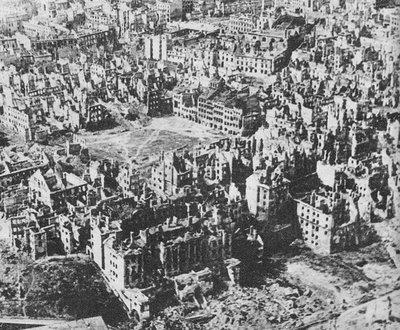The End of the Bloodiest War in History: Part II

This is the second in a series of posts detailing the human cost of the Second World War in Europe. Today we take a closer look at the toll in Eastern Europe.
In spite of the staggering human loss and destruction across all of Western and Southern Europe it could barely compare to the horror of Eastern Europe’s devastation. For example, Romania lost 500,000 people, 200,000 of which were civilians, or more people than the United States lost during the entire war but with a population a fraction of the American's size. Hungary also bore witness to hundreds of thousands of deaths – losing 300,000 Jewish citizens in just a matter of weeks during 1944; when the German army invaded its erstwhile ally to make sure it remained in the war all while enabling the Final Solution. In addition, the Red Army raped tens of thousands of Hungarian women in 1944-1945 – part of a pattern of systematic rape during the war’s final year that would see millions of women across Central and Eastern Europe suffer horribly under Soviet rule.
That said, few nations endured the sheer scale of violence than did Poland, perhaps because its people fought against the twin evils of Stalin and Hitler without stop for the better part of six years - with approximately 750,000 Polish men and women under arms fighting in the Polish Home Army, for the Allies, or with the Red Army. This resistance proved deadly. During the German and Soviet invasion of September 1939 the Polish military suffered 70,000 killed and 133,000 wounded in action. From September 1939 to June 1941 Stalin deported over 250,000 Polish prisoners of war, and one million Polish civilians – mostly sent to the Gulags. Thousands died in transit, after being packed into cattle cars with no food, exposed to disease and the elements. Upon arriving at the Gulag’s, and after this nightmarish journey, hundreds of thousands more would die. As for the Soviet occupation policies, in general murder, torture, kidnapping, massive theft, phony elections, and deportations were everyday occurrences. Then, during the spring of 1940 Stalin authorized the murder of at least 20,000 Polish prisoners of war, intellectuals and anyone else Stalin feared might cause unrest. In spite of these horrors Soviet atrocities paled in comparison to German activities.
Within days of the War’s beginning German crimes against Polish civilians, including killing, rape, and looting, had become frequent occurrences. At the same time, and in preparation for German settlement, Hitler ordered immediate wide spread executions aimed at the Polish intelligentsia. German forces also began depopulating huge swaths of the Polish countryside. For the most part, the leadership and men of the Wehrmacht either participated in the massacres or stood aside and observed. By the end of September 1939 alone the Wehrmacht had murdered 1,200 Jews. By the end of October 1939 the Wehrmacht, Einsatzgruppen and various German security and police services had killed 20,000 people in 764 massacres, with 311 of these the Wehrmacht’s responsibility. By 1945 one of six Polish farms were simply gone and entire cities had been obliterated. For instance, Warsaw (pictured with this article as it appeared in October 1944) lost 90% of its homes at the hands of the Germans, and as many as a quarter of a million civilian dead during the 1944 uprising alone. All told, Poland suffered 5 million dead between 1939 and 1945, or nearly twenty percent of Poland’s pre-war population. During 1945-1948 another thirty thousand Poles would die fighting a guerilla war against the Red Army and the communist regime put into power over Poland by Stalin. Remarkably, and in spite of the sheer scale of Poland’s losses, it did even come close to ranking as the European nation losing the most number of people during the war – that nation will be the subject of our next part in this series.



Post new comment